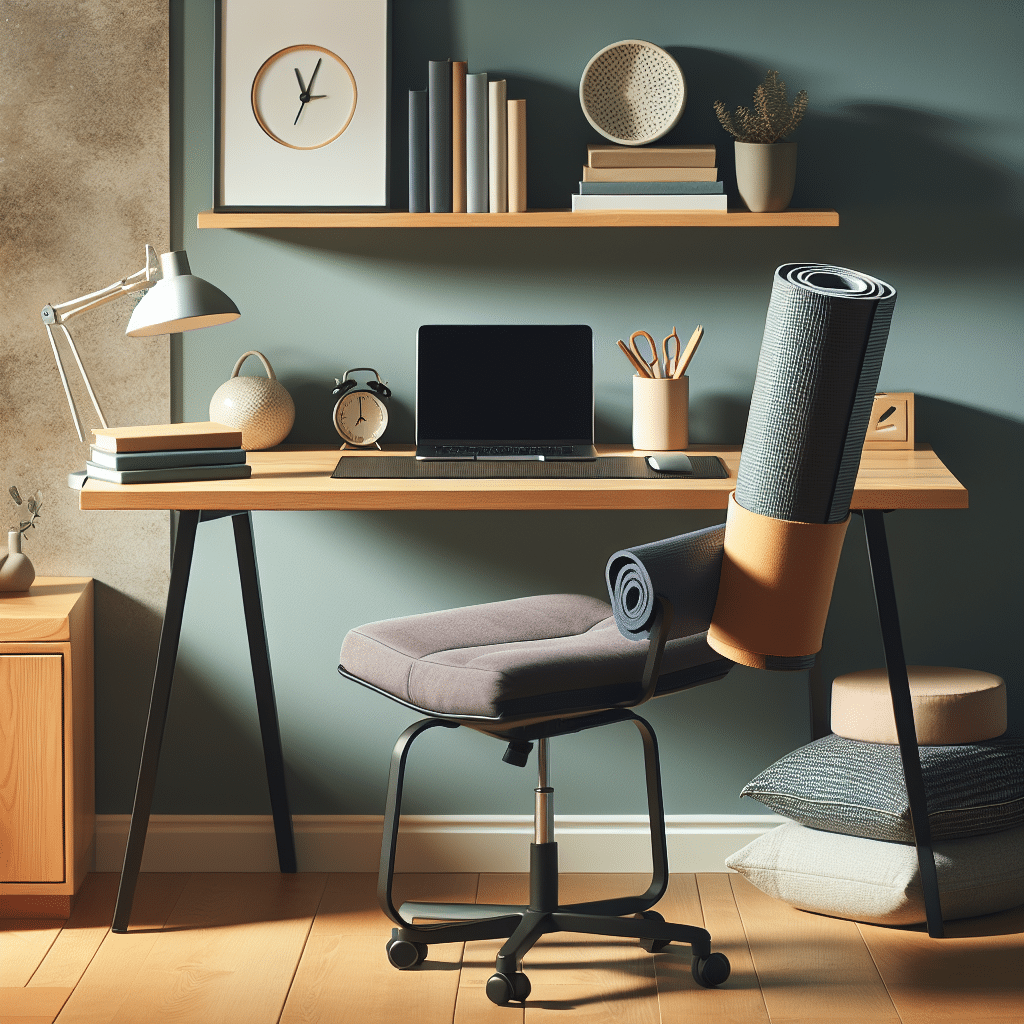Understanding Posture and Its Importance
Poor posture can lead to a myriad of health issues, including back pain, neck strain, and reduced productivity. Many people struggle with maintaining proper posture, especially when seated for long hours at a desk. However, you don’t need to invest in expensive ergonomic furniture to achieve better posture. Everyday household items can provide effective support, promote alignment, and enhance overall comfort.
Essential Household Items for Posture Support
1. Cushions and Pillows
Cushions and pillows serve multiple purposes in promoting better posture:
- Lumbar Support: Use a small cushion or a rolled-up towel to support your lower back. Place it in the small of your back while seated to encourage natural curvature of the spine.
- Seat Padding: If your chair lacks padding, a thick cushion can help reduce pressure on your pelvis and enhance comfort.
2. Books and Catalogs
Utilize books or catalogs to create a makeshift footrest or laptop stand:
- Foot Support: Stack books under your feet if they don’t comfortably reach the ground. Elevating your feet helps to align your pelvis and reduce strain on your lower back.
- Laptop Heights: If you’re using a laptop, add a few books to elevate the screen to eye level. Keeping the screen at eye height reduces neck strain and promotes an ergonomic typing position.
3. Straps and Belts
You can use straps or belts to help maintain better alignment:
- Chair Straps: Secure a stretchy belt around your chair and your waist to promote straight sitting. It gently reminds you to engage your core, preventing slumping.
- Arm Rests: If your chair lacks arm support, fasten a scarf or strap from the arm of the chair to your upper back. This encourages relaxation of the shoulders and prevents hunching.
4. Tupperware and Plastic Containers
Tupperware can provide unique solutions for your workspace:
- Stand-Up Helpers: Stack them beneath your monitor or keyboard. This simple hack elevates your screen to the proper level, encouraging a neutral neck position.
- Mouse Adjustments: If your wrist feels strained, try using a small, flat container as a supportive mouse pad. It can stabilize your wrist and promote better alignment.
5. Exercise Balls
An exercise ball doubles as a fun tool and a supportive alternative:
- Core Stability: Replace your chair occasionally with an exercise ball. This engages your core muscles, promoting balance and strength. Make sure your feet are flat on the floor and your knees are at a 90-degree angle.
- Short Breaks: Use the ball as a tool to take breaks. Standing or bouncing lightly on it enhances circulation and keeps your body alert.
6. Blankets or Throws
A cozy blanket can also offer benefits for better posture:
- Shoulder Support: Roll a blanket and place it behind your shoulders. This prop supports the upper back and encourages you to sit up straighter.
- Footrest: Fold a blanket to create a small footrest. This adjustment can enhance overall positioning and reduce pressure on your legs.
7. Tape and Adhesives
Using tape strategically can make a difference:
- Guidelines: Apply tape on the floor to mark where your feet should be when seated, encouraging consistency in your position.
- Posture Reminders: Stick notes to your desk reminding you to check your posture regularly. This can serve as an effective visual cue throughout your workday.
Performing Simple Adjustments
Making small adjustments can significantly impact your posture:
8. Chair Height Adjustments
Ensure your chair is at the correct height. Your feet should be flat on the ground, with your knees approximately at hip level. If needed, use a folded towel or blanket to adjust the height of your seat.
9. Monitor Positioning
Place your monitor at an arm’s length away, with the top of the screen at eye level. This prevents neck strain and encourages you to sit back in your chair rather than leaning forward.
10. Keyboard and Mouse Placement
Position your keyboard and mouse so your elbows are at 90 degrees, allowing your forearms to rest comfortably on your desk. If your mouse is too far away, consider using a small container to bring it closer.
Incorporating Movement Throughout the Day
In addition to using household items for posture improvement, incorporating movement is essential. Adjust your sitting position frequently, stretch your body, and take regular short breaks. These changes can dramatically enhance comfort and posture over time.
Practical Exercises at Your Desk
Incorporate some simple exercises into your daily routine using household items:
- Seated Twists: While seated, hold onto the back of your chair and gently twist your torso to each side to stretch your spine.
- Wrist and Finger Stretches: Perform wrist circles and finger stretches using a towel or small object to improve flexibility and reduce tension.
- Chair Squats: Stand in front of your chair, lower into a squat while hovering above the seat, and then rise back up to strengthen your legs and core.
Conclusion
Achieving better posture doesn’t require a major investment. With creativity, you can use common household items to support your body while working at a desk. By making slight adjustments and incorporating physical activity, you can effectively enhance your posture, leading to increased comfort and productivity. Embracing these changes can lead to a healthier work environment and overall well-being.
